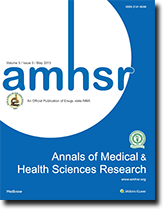

Research Article
Effect of Lower Limb Task-Oriented Mirror Therapy on Balance, Gait and Mobility in Patients with Subacute Stroke: A Pilot Randomized Controlled Trial
Author(s):
Rucha Agnihotri* and Ashwini Kale
Background: Stroke leads to disturbance of various brain functions leading to impairments in tone, coordination, muscle recruitment patterns and difficulty in selective joint movements. 72% of the stroke patients presents with lower limb weakness. However, gait impairments are present even after 3 months of stroke. Rehabilitation strategies available to improve function in stroke patients are often intensive and making its availability for all patients difficult. Hence, novel treatment strategies are needed to improve functional performance. Task-oriented movements induce greater cortical activity and also induces more motor recovery than movements without task. Task oriented mirror therapy is a novel combination therapy which may provide better rehabilitation outcomes after stroke. Aim: To evaluate the effect of lower limb task-oriented mirror therapy on balance, gait and mobility in.. Read More»
Select your language of interest to view the total content in your interested language
Annals of Medical and Health Sciences Research received 24805 citations as per google scholar report
 The Annals of Medical and Health Sciences Research is a monthly multidisciplinary medical journal.
The Annals of Medical and Health Sciences Research is a monthly multidisciplinary medical journal.